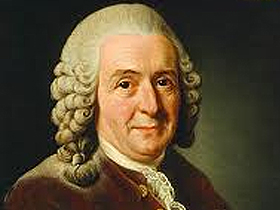 Carolus Linnaeus Carolus Linnaeus |
In 1735, the Swedish natural historian Carolus Linnaeus published his Systema Naturae ("System of Nature"), in which he classified all living species. He believed that species did not change, that the species he had classified possessed characteristics that they would preserve down through future generations. Linnaeus was a pathfinder in botany and zoology, and the classifications he made for plants and animals are still used by biologists today and constitute the basis of their nomenclature.22
Linnaeus first raised the matter of similar organs in animals, regarding them as an example of common creation. In his view, similar organs resembled one another not because they had evolved by chance from some common forerunner, but because they had been consciously designed to fulfill a specific purpose. Different living things having similar organs stems from their being the works of a single Creator. Why all birds have wings, for instance, is because wings have the ideal structure for flight, and therefore, this ideal structure must have been created separately for every species of bird. This view is clearly predicated on the assumption that Allah creates every living thing. (See Creationism.)
In fact, modern scientific findings show that with regard to similar organs, the claim of a common ancestor is not valid, and that the only possible explanation is one of common creation. (See The "Common Ancestor" Lie.)
22.http://www.ucmp.berkeley.edu/history/linnaeus.html


